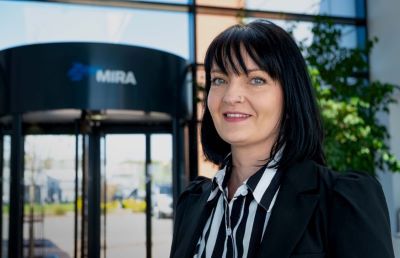There is a level of complexity around legislation in the automotive sector that has never been seen before. What’s more, it’s evolving at an unprecedented pace as markets seek to eradicate combustion engine vehicles and embrace new autonomous driving features and technologies.
Not only must manufacturers understand their obligations at the point of product launch, they must also have an appreciation of what changes are likely to occur during the life of the product so compliance can be planned; avoiding potentially obsolete or rejected products.
To add further complexity, legal requirements and certification processes vary by market, meaning different features and processes are needed. Even within each market there can be variations, depending on the certification route chosen and production volumes.
The lack of a robust and reliable means of monitoring and understanding current and future legislative requirements can lead to big problems. A manufacturer can be left exposed and possibly facing major re-work costs. In some cases, companies have only found out about such issues when their vehicle has been stopped at the market entry port and they are told that a required mandated feature is absent. That situation leads to difficult negotiations with authorities, costly delivery delays and, potentially, the need to physically remove the vehicles from the market to rectify the issue.
The introduction of Euro 7 emissions standards in Europe is arguably the biggest step change of any of the Euro emissions stages. The scope of this key legislation, which is often cascaded into other global markets, now extends to brake particle emissions, tyre abrasion limits and xEV battery durability requirements.
The EU General Safety Regulation 2 is also in its implementation phase. The regulation reshapes the EU type approval framework and introduces a raft of requirements for driver assistance systems, such as intelligent speed assistance devices, cyber security and, as technology progresses, creates an approval framework for autonomous vehicles. The application of the GSR2 is complex and, in some cases, mandates new approval subjects for which requirements and regulations are yet to be drafted. In the early stages of implementation there were cases of regulations being published less than 12 months before they were mandated, creating a challenge even for a manufacturer with clear vision and understanding of the legislation. The cost of integration of some of the new features is significant both in terms of engineering and certification. As a result, manufacturers of lower volume vehicles – including new entrants – are seeking derogations that can be applied generally or within each subject regulation, which can often be difficult to identify and interpret.
Fully understanding obligations, implementation timelines and where derogations can be sought is key for any manufacturer but none more so than new entrants without established design and compliance processes, or local market knowledge and networks. The very nature of these companies, with small teams and design programmes in constant flux, creates potential for key legal requirements to be missed or misunderstood, leading to significant and costly delays.
Tier 1 and 2 suppliers of systems and components that are embedded within these vehicles also play a critical role in compliance. If they are to avoid being the cause of delays to their client’s vehicle certification, they need to be aware of not only legal obligations for their products but also the certification requirements for the completed vehicle, as the design and performance of their product can impact this. Suppliers are often engaged well in advance of the start of vehicle production, so a clear picture of the legislative landscape for the lifecycle of the vehicle is crucial.
In the past, products have been approved to a particular revision of a regulation, but not updated in line with newer versions of the regulation. That has resulted in their product being rejected or the end vehicle manufacturer having to complete more tests to validate the vehicle. Had these organisations had a robust methodology for maintaining an understanding of current and future legislative obligations, the costly and damaging situations could have been avoided.
The best approach is for vehicle manufacturers and suppliers to think ‘certification’ at the outset (and throughout) any new product/vehicle programme, not just at the end. All current and known future legislative requirements need to be considered at the beginning of the process and it is essential that they are fully understood and embedded in the design and approval strategy. This knowledge drives the right decisions and is vital as this will prevent re-work and delays for product launches.
HORIBA MIRA’s Certification and Homologation experts are addressing this shortfall in the industry by continuously monitoring legal and regulatory requirements for global markets. The team performs legislative reviews on behalf of automotive manufacturers and suppliers, focusing on their products, approval routes, volumes, and target markets.
These reports help manufacturers and importers to determine if their product design or concept meets current and known future requirements before embarking on the full development programme, and also outline the most appropriate approval route and strategy for their desired markets. Finally, with this approach, manufacturers and importers are prepared for any forthcoming legislative changes, meaning they can stay one step ahead of implementation.

Claire McKee, a Homologation and Certification project engineer at HORIBA MIRA
For more information about HORIBA MIRA’s certification and homologation services, please visit HORIBA MIRA.











Water Sector Talent Exodus Could Cripple The Sector
Maybe if things are essential for the running of a country and we want to pay a fair price we should be running these utilities on a not for profit...